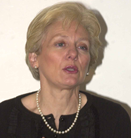
The strategic objectives that the University pursues include: -Promoting fundamental and applied scientific research, consolidating the Departments as the main drivers of research development and autonomous centers within a strategic reference framework provided by the university, operating both through the provision of common services and infrastructures for research, and through a progressive integration of UniMORE activities into national and international (especially European) research networks, finally favoring a qualitative and quantitative increase in the project activity. -Strengthening the recruitment policy of qualified young people, both through the strengthening and internationalization of PhDs, and through the enhancement of researchers and fellows. -The stimulus towards research activities capable of a significant social, economic, cultural impact, to be achieved through technology transfer tools, including the creation of spin-offs and start-ups, within the framework of a specific policy aimed at improving dialogue with institutions, from those of the territory to national or international ones, interested in collaborating in an intersectoral manner with the world of university research.
WEB site: http://www.unimore.it/ateneo/dsv.html
Profile of staff engaged in the project
 Rossella Tupler Rossella Tupler is a medical geneticist, expert in the molecular genetics of degenerative diseases. Her laboratory has contributed significantly to the study of the molecular basis of facioscapulohumeral muscular dystrophy (FSHD). The laboratory studies the role of repetitive D4Z4 elements in the chromatin organization of the subtelomeric region of chromosome 4q and studies the mouse model of FSHD. Moreover, the laboratory is the Italian reference center for the molecular diagnosis of FSHD. Rossella Tupler coordinates the Italian clinical network for FSHD and is curator of the Italian National Registry for FSHD. The registry collects the standardized clinical evaluations of more than 4,000 subjects. The close integration between basic research and clinical studies allows the results of basic research to be translated to clinical application and precision medicine.
Rossella Tupler Rossella Tupler is a medical geneticist, expert in the molecular genetics of degenerative diseases. Her laboratory has contributed significantly to the study of the molecular basis of facioscapulohumeral muscular dystrophy (FSHD). The laboratory studies the role of repetitive D4Z4 elements in the chromatin organization of the subtelomeric region of chromosome 4q and studies the mouse model of FSHD. Moreover, the laboratory is the Italian reference center for the molecular diagnosis of FSHD. Rossella Tupler coordinates the Italian clinical network for FSHD and is curator of the Italian National Registry for FSHD. The registry collects the standardized clinical evaluations of more than 4,000 subjects. The close integration between basic research and clinical studies allows the results of basic research to be translated to clinical application and precision medicine.